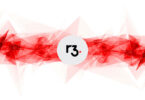Over the weekend, a Banco Santander executive suggested on LinkedIn that someone might want to create a public, permissioned Layer 2 chain that is Ethereum compatible. John Whelan, who leads the Crypto & Digital Assets Unit at the bank, pointed out it could be hand for the EU DLT Pilot Regime. Starting in December this year, this will allow regulated institutions to experiment with security tokens at scale. And the UK is planning something similar.
Whelan is one of the more experienced executives in this area, having helped the bank release a bond on the public Ethereum blockchain back in 2019. Santander was also involved in the European Investment Bank’s €100m public blockchain bond last year.
His question ignited some debate, with a variety of views expressed.
Layer 1 permissioned blockchains
First off was the suggestion that regulated institutions create their own Layer 1 public permissioned blockchain. One of the responses was from SWIAT, the blockchain network initiated by Germany’s DekaBank with a grand plan to bring global financial institutions onto the same platform to trade digital assets. They’re not the first to do so – others such as R3 and SETL/Digital Asset have similar ideas – but SWIAT aims to be Ethereum compatible.
Permissionless
At the other end of the spectrum, someone suggested that the financial sector should have ” the guts to be active in the L1, public, permissionless space”. Similarly, an executive at ABC Bank, one of Bahrain’s leading banks, argued that identification by design is “a heck of a friction to achieve network effects”. Neither clarified how institutions could forgo identification and remain compliant with regulations. However, some permissioned applications are appearing on public blockchains. Although as we’ll see, permissions are not the only issue.
The ABC executive also asserted that private permissioned blockchains had failed, which received polite objections from the former Chair of enterprise blockchain firm R3 Frédéric Dalibard. While consortia are certainly challenging, there are several examples of successful permissioned deployments, such as Baton Systems‘ solutions that process tens of billions daily. Likewise, Broadridge and JP Morgan each have Repo solutions active at an even larger scale. And there are several other examples.
Layer 2 with privacy
Dalibard points out that the recent Obscuro Project is working on exactly what Santander’s Whelan suggested. Apart from its Corda enterprise blockchain, R3 has developed a privacy solution, Conclave. The Obscuro team is using knowledge gained in the development of Conclave to work on Obscuro, a Layer 2 permissionless Ethereum solution which may have utility for the institutional sector. A key driver behind its design is to address a major weakness in many public blockchains – queued transactions are visible to all, allowing them to be front-run, removing profit opportunities. It’s been dubbed “Miner Extractable Value” (MEV).”
Yet another person on LinkedIn highlighted that one of the side effects of Layer 2 solutions is to fragment the ecosystem.
While it was a lively LinkedIn topic, some issues were not addressed. Not all activities are the same and public and private blockchains may be more appropriate for certain use cases. For example, some might prefer private blockchains for complex workflows and where a company wants to interact with its own ecosystem, such as its suppliers. Where the offering is transactional and public, then public blockchains might make more sense, provided they can be compliant. And Ethereum’s Layer 1 transaction costs are not viable for most businesses.
A key determinant between public and private blockchains will be regulators’ risk appetite. While many thought that the Terra stablecoin was highly risky, its dramatic collapse and the resultant loss to retail investors will likely attract even more attention from regulators. After we wrote the Terra article, U.S. Treasury Secretary Yellen used Terra as an example of cryptocurrency and stablecoin risks.






